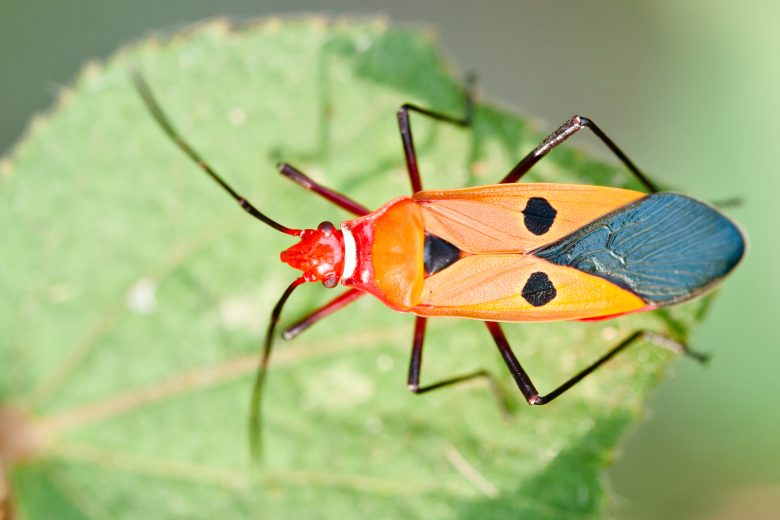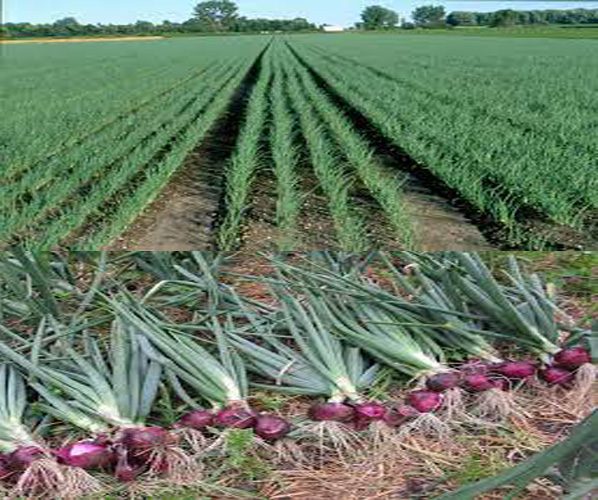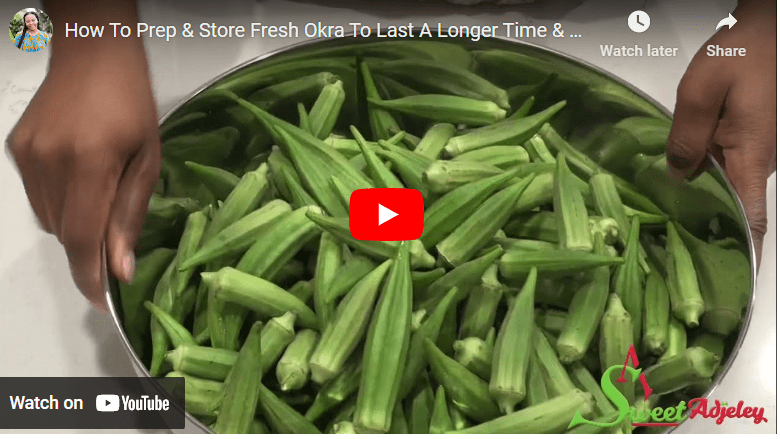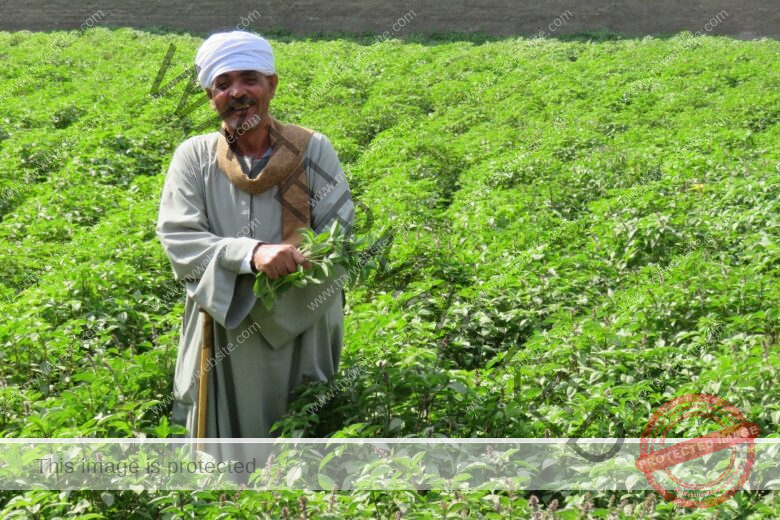Cotton Stainers are insects that can cause significant damage to a variety of crops, including cotton, soybeans, and other legume crops.
They feed on the sap of the plant and can cause stunted growth, yellowing of leaves, wilting, and in severe cases, plant death.
The damage caused by cotton stainers can lead to reduced crop yields and quality, affecting the overall profitability of the farm.
In this article, we will identify several crops that are susceptible to cotton Stainer attack including vital information to help you take appropriate action, protect your crops and maintain high levels of productivity.
Crops Susceptible To Cotton Stainer Attack
Cotton Stainer Attack refers to the damage caused by a small insect known as the Cotton Stainer bug or “red bug”.
This bug feeds on the cotton bolls and leaves of various crops, causing significant damage. Cotton stainers are known to attack a variety of crops, including legumes, fruits, flowers, herbs, grains, and vegetables.
Read Also: Crops Suitable For Sprinkler Irrigation System
The attack on crops by the cotton stainer bug can result in reduced yield, decreased quality, and reduced market value of the crops.
Here are ten examples of each type of crop that is susceptible to cotton stainer attack:
Legumes
In legumes, the cotton stainer can attack cotton, soybeans, peanuts, alfalfa, beans, lentils, peas, clover, chickpeas, and lupins causing wilting and stunting of the plants.
Fruits
Fruit crops, such as grapes, strawberries, blueberries, raspberries, blackberries, peaches, plums, and melons, are also at risk of attack, leading to discoloration, scarring, and reduced yields.
Read Also: 100 Crops Resistant To Drought
Flowers
Flowers, such as roses, lilies, marigolds, petunias, sunflowers, zinnias, impatiens, pansies, geraniums, and snapdragons are also at risk of been attacked by this pest.
Grains
Grains, such as wheat, barley, oats, corn, rice, millet, sorghum, rye, and triticale can also suffer from cotton Stainer damage, leading to reduced yields and lower quality grain.
Vegetables
Vegetables, including carrots, onions, cucumbers, squash, bell pepper, tomatoes, and melons, can also be susceptible to cotton Stainer attack, causing damage to the leaves and fruit.
Read Also: 15 Common Diseases of Vegetables Farm And How To Treat
It is important for farmers to be aware of the crops that are susceptible to cotton Stainer attacks so that they can take appropriate measures to protect their crops and prevent damage.
Implementing proper crop rotation, using insect-resistant varieties, and monitoring crops regularly for signs of infestation can
Causes of Cotton Stainer Attack in Plants
The cotton Stainer bug is attracted to crops such as cotton, soybeans, beans, and peas, and can cause damage by feeding on the plant’s seeds and stems.
This feeding can lead to a reduction in the number of seeds produced, as well as decreased seed quality and viability.
Also, the bug’s feeding can also cause damage to the plant’s stems, leaves, and buds, reducing the overall health and yield of the crop.
Read Also: 7 Common Diseases Of Beans Plantation And How To Treat
Signs and Symptoms of Cotton Stainer Attack in Plants
The signs and symptoms of a cotton stainer attack in plants include:
- Discoloration of the seeds, stems, leaves, and buds
- Small holes in the seeds, stems, and leaves
- Wilting of the plant
- Stunted growth
- Reduced yield
- Decreased seed quality
Identifying Cotton Stainer Attack in Plants
Identifying a cotton stainer attack in plants can be done by visually inspecting the crop for signs of damage.
The presence of small holes in the seeds, stems, and leaves, as well as discoloration, wilting, and stunted growth, are all indicators of a cotton stainer attack.
More so, the presence of the cotton stainer bug itself can be an indicator of an attack, as the bug is typically found on the stems and leaves of affected crops.
Read Also: Plants Susceptible To Spider Mites
Prevention of Cotton Stainer Attack on Plants
To prevent cotton stainer attack, the following measures can be taken:
#1. Crop rotation
Avoid planting crops that are susceptible to cotton stainer attack in the same field for several years in a row. Instead, rotate crops to prevent build-up of the pest population.
#2. Plant Resistant Varieties
Plant cotton varieties that have shown resistance to cotton stainer attack. This can be done by checking seed catalogs for varieties that are resistant or tolerant to the insect.
#3. Monitoring
Regular monitoring of the plants can help detect the presence of cotton stainers in their early stages, making control easier and more effective.
Read Also: Plants Susceptible To Powdery Mildew
#4. Sanitation
Remove and destroy all plant debris, such as leaves and stems, after the harvest season. This will help prevent the overwintering of cotton stainers and reduce the possibility of infestation in future seasons.
#5. Pesticide Application
Application of insecticides can be done before the cotton stainer’s larvae move into the buds and seeds of the cotton plant. This helps prevent damage to the cotton crop.
How to Treat Cotton Stainer Attack on Plants
There are several treatment methods for cotton Stainer attack, typically they care chemical and herbal methods
Chemical
A chemical treatment that can be used for cotton Stainer attacks include
Pyrethroids
This is a type of insecticide that is effective against cotton Stainers. It works by disrupting the nervous system of the insect, leading to paralysis and death.
Read Also: 100 Plants Susceptible To Honey Fungus
Organophosphates
This is another type of insecticide that is effective against cotton stainers. It works by blocking the nervous system of the insect, leading to paralysis and death.
Herbs
Herbal treatment that can be used for cotton stainer attack include:
Neem oil
This oil is extracted from the seeds of the neem tree and is effective against cotton stainers. It works by disrupting the insect’s digestive and nervous systems, leading to death.
Garlic
This herb has been found to be effective against cotton stainers. It works by deterring the insect from feeding on the plant.
Chili Pepper
This herb contains capsaicin, which is toxic to cotton stainers. Spraying a mixture of chili pepper and water on the plant can help prevent damage from the insect.
Read Also: 5 Common Diseases of Pepper Farm [Treatment]
It is important to follow the instructions on the label of the insecticide or herb before application, and to also follow safety precautions to protect yourself and the environment.
Also, it is recommended to rotate the use of different types of chemicals and herbs to prevent the development of insecticide resistance in cotton stainers.
Natural Remedies for Cotton Stainer Attack on Plants
One of the natural remedies for cotton stainer attack is crop rotation. By rotating crops, the adult cotton stainers are prevented from laying eggs on the same plants and this helps to reduce the population of the insects.
Another natural remedy is the use of insect-repelling plants, such as marigolds or mint, which can be planted around crops to deter the cotton stainers from laying eggs.
Another effective way to prevent cotton stainer attack is to keep the surrounding area clean and free from debris.
Read Also: 5 Common Diseases of Cocoa Farm and How To Treat
This means removing any plant debris or weeds from the area, as these provide shelter for the adult cotton stainers. Additionally, it is important to keep the plants well-watered and fertilized, as healthy plants are less likely to be attacked by cotton stainers.
How to Control of Cotton Stainer Attack Spread
Controlling the spread of cotton stainer attack is crucial to preventing further damage to crops.
One way to control the spread is by monitoring and removing affected plants from the field. This will help to reduce the population of adult stink bugs that lay eggs on the plants.
You can also practice crop rotation and use resistant crop varieties. Using insecticide sprays during the growing season can also help control the spread of cotton stainer attack.
Another way to prevent the spread is by controlling weeds around the field, as these can serve as alternative host plants for the cotton stainer bug.
Maintaining a clean and well-maintained farm can also help reduce the spread of cotton stainer attack.
Cotton Stainer Damage
The cotton stainer bug is known to cause severe damage to a variety of crops such as cotton, soybean, peanut, and other legumes. These insects feed on the developing seeds and cause significant reductions in seed quality and yield. This can lead to economic losses for farmers.
Cotton Stainer Mode of Feeding
Cotton stainers feed by puncturing the plant’s stem and sucking out the sap, which can result in discoloration, stunting, and reduced yields. The insects feed in large groups, making the damage even more severe.
Cotton Stainer Prevention
Preventing cotton stainer infestations involves several strategies, including crop rotation, sanitation, and the use of insect-resistant crops. Another approach is to use insecticides or natural predators to control their populations.
Are Cotton Stainer Bugs Poisonous
Cotton stainer bugs are not considered to be poisonous to humans. However, they do secrete a foul-smelling fluid that can cause skin irritation and discoloration. If the fluid comes into contact with clothing, it may cause discoloration or staining. It is best to handle cotton stainers with caution and wash your hands after coming into contact with them.
Cotton Stainer Scientific Name
The Cotton Stainer, scientifically known as Dysdercus suturellus, is a small insect that feeds on cotton plants and can cause significant damage to the crop.
Red Cotton Bug In Okra
The red cotton bug in okra, also known as the “redbug,” is a variation of the cotton stainer and feeds on okra plants.
Characteristics Of Cotton Stainer
The characteristics of the cotton stainer include its red and black body and its ability to cause yellowing and wilting of the leaves of affected plants.
How To Control Cotton Stainer
To control cotton stainer populations, a combination of cultural and chemical control methods can be used.
Crop rotation, sanitation, and use of insecticides can help reduce the population of these pests.
Using reflective mulches, releasing beneficial insects like ladybugs, and handpicking the bugs can also help to control the spread of cotton stainers.
Also, It is important to monitor crops regularly for any signs of cotton stainer infestation and to implement control measures early to prevent significant damage to the crop.
Mode Of Feeding Of Cotton Stainer
The mode of feeding of the Cotton Stainer involves the larvae boring into the cotton bolls and feeding on the seeds.
This feeding damages the seeds, reducing the yield and quality of the cotton crop.
The Cotton Stainer is considered a major pest in cotton-growing regions, as the damage, it causes to the cotton crop can lead to significant economic losses.
Classification Of Cotton Stainer
the Cotton Stainer is a member of the subfamily Heliothinae and the genus Dargida. It is also related to other pest species such as the Tobacco Budworm and the Soybean Looper.
The Cotton Stainer is widely distributed and has been reported in cotton-growing regions throughout the world, including North America, South America, Africa, and Asia.
Conclusion
In conclusion, cotton stainer attacks can cause significant damage to various crops, but there are various methods that can be used to prevent and control these attacks. Practicing good crop management, selecting resistant crop varieties, and using natural remedies are just a few of the strategies that can be used to help minimize the impact of cotton stainer attacks.




